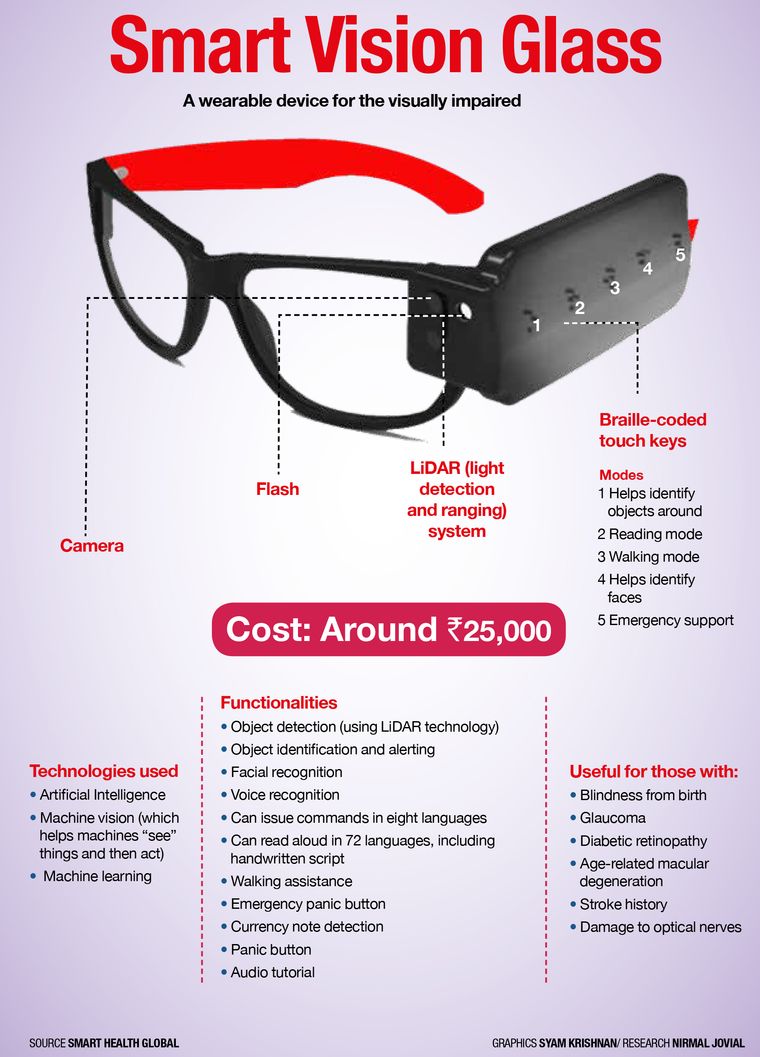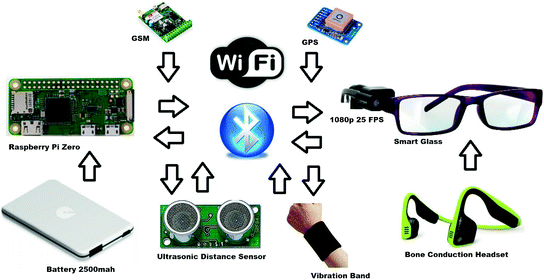The Future of Assistive Technology for the Blind: Empowering Independence
Wiki Article
Empowering Freedom With Assistive Innovation for the Blind
The integration of assistive innovation for individuals that are blind or visually damaged represents a substantial development in cultivating independence and improving lifestyle. With a variety of tools-- from display viewers to ingenious responsive tools-- these modern technologies not only promote navigation and interaction but additionally advertise social inclusion and engagement in numerous aspects of life. As we check out the varied sorts of assistive gadgets and their real-world applications, it becomes clear that the impact is extensive. Yet, the evolution of this innovation raises important inquiries about access and future advancements that call for more examination. Assistive technology for the blind.Understanding Assistive Innovation
Although assistive modern technology has actually progressed substantially for many years, its essential purpose continues to be the same: to boost the lifestyle for people with disabilities, specifically those who are visually impaired or blind. This technology includes a wide variety of tools and gadgets that facilitate freedom and capability in daily activities.Assistive modern technology can be classified into high-tech and low-tech remedies, each developed to fulfill certain demands. High-tech devices often include software application applications, specialized equipment, and flexible tools that use advanced modern technology to provide support in numerous contexts. Alternatively, low-tech solutions may entail day-to-day products that are customized to improve accessibility, such as magnifiers or responsive markers.
The integration of assistive technology right into the lives of people who are blind or visually hindered not only promotes autonomy however likewise promotes social incorporation and involvement in specialist and instructional settings. By leveraging these innovations, individuals can navigate their surroundings, gain access to details, and connect effectively, consequently improving their overall lifestyle. Understanding assistive technology is critical for advocates, specialists, and caregivers who intend to support individuals in maximizing their possible and attaining greater self-reliance.
Sorts Of Assistive Devices
Assistive gadgets for the visually damaged and blind are vital devices that boost daily obeying resolving certain difficulties encountered by customers. These tools can be broadly categorized right into three main kinds: optical gadgets, digital gadgets, and sensory devices.
Sensory tools, such as Braille screens and responsive maps, provide alternative ways to receive details. Braille displays convert electronic message right into Braille, enabling customers to review via touch. Responsive maps supply spatial understanding via elevated appearances and lines, permitting much better environmental awareness.
With each other, these assistive tools empower individuals with visual impairments to involve even more fully with their surroundings, advertising better freedom and confidence in everyday activities.

Effect On Day-to-day Live
The integration of assistive innovation right into the every day lives of individuals that are blind or aesthetically impaired significantly improves their ability to browse and engage with the world around them. Gadgets such as display visitors, Braille shows, and mobile applications help with access to info, allowing customers to involve with electronic content, connect successfully, and manage daily jobs separately.In addition, innovations like wise glasses and navigating apps give real-time aid in unfamiliar settings, improving wheelchair and confidence. These devices enable customers to determine barriers, read indications, and also acknowledge faces, hence cultivating a sense of autonomy in public areas. Additionally, home automation systems, which can be managed via voice commands, allow people to manage their living settings much more properly, enhancing comfort and safety and security.
The effect of assistive innovation prolongs past practical jobs; it advertises social inclusion and emotional wellness. By bridging the space in between individuals and their surroundings, these innovations encourage customers to take part fully in area activities, seek instructional opportunities, and involve in purposeful connections. Eventually, the advancement of assistive technology contributes in redefining the opportunities for people that are visually impaired or blind, resulting in an extra comprehensive and obtainable culture.
Success Stories and Endorsements

Another powerful testimony comes from Mark, a recent university graduate who utilized screen analysis software program throughout his scholastic journey. This technology allowed him to accessibility program materials and take part in conversations, ultimately leading to his effective shift into the workforce. Mark debts assistive modern technology for equipping him to achieve his occupation goals, highlighting its role in leveling the having fun field for people with visual problems.
Additionally, recreation center have actually reported enhanced engagement in their programs thanks to the intro of available digital platforms. These systems have made it less complicated for individuals to attach, share resources, and support one another. These success stories jointly highlight the extensive effect of assistive technology in cultivating self-reliance, boosting lifestyle, and damaging down obstacles for the visually damaged and blind community.
Future Patterns in Assistive Technology
Arising technologies are positioned to change the landscape of assistive tech for people who are blind or visually damaged. Innovations in expert system (AI) and machine discovering are boosting the capabilities of devices, making it possible Wearable technology for low vision for even more instinctive individual experiences. As an example, AI-driven applications are significantly able to review and recognize things text aloud in real-time, giving users with useful details about their surroundings.Furthermore, improvements in wearable innovation are creating brand-new possibilities for independence. Smart glasses outfitted with enhanced reality attributes can overlay essential details onto the customer's visual field, helping with navigating and communication with the environment. The assimilation of Web of Points (IoT) gadgets is simplifying access in wise homes, permitting individuals to regulate appliances and receive alerts through voice commands or responsive interfaces.
The advancement of braille display screens and responsive comments systems is additionally increasing, advertising access to electronic material and improving communication. As these modern technologies continue to progress, they assure to enhance day-to-day living, educational chances, and work prospects for individuals with visual disabilities. Continuous partnership in between engineers, customers, and campaigning for groups will be crucial in guaranteeing these advancements fulfill the demands of the neighborhood properly.
Conclusion
To conclude, assistive modern technology plays a critical duty in boosting the independence of people who are aesthetically damaged or blind. By supplying vital tools and resources, these innovations facilitate boosted interaction, navigation, and gain access to to information, therefore fostering freedom and self-esteem. The transformative effect of assistive tools not just advertises efficient communication with the environment yet likewise motivates social inclusion and engagement in numerous facets of life, inevitably encouraging customers to prosper within their areas.The combination of assistive technology for individuals who are visually damaged or blind stands for a substantial innovation in promoting independence and improving quality of life.The assimilation of assistive innovation into the lives of individuals who are blind or aesthetically harmed not only advertises autonomy however additionally cultivates social incorporation and engagement in educational and expert settings. Eventually, the improvement of assistive modern technology is critical in redefining the possibilities for people that are aesthetically damaged or blind, leading to an extra comprehensive and available culture.
Several individuals that are blind or aesthetically impaired have shared inspiring success tales that highlight the transformative effect of assistive modern technology on their lives.In verdict, assistive innovation plays a pivotal duty in enhancing the self-reliance of people who are visually damaged or blind.
Report this wiki page